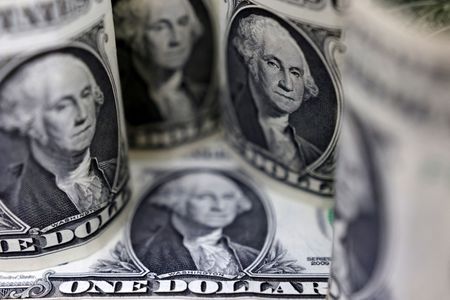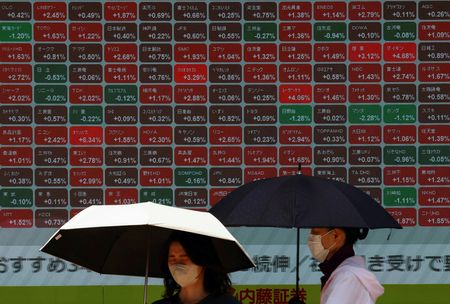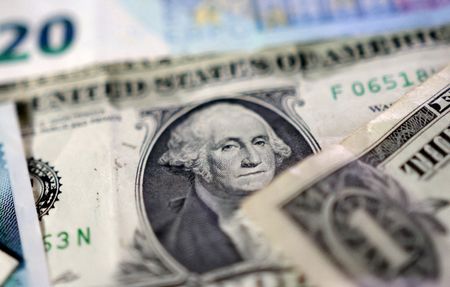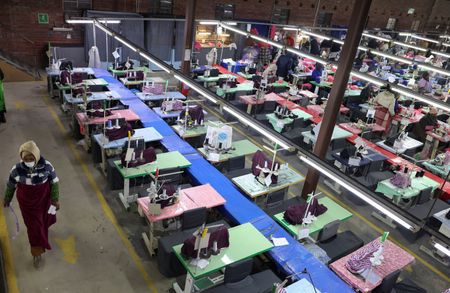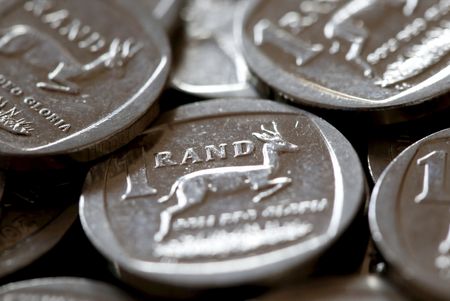By Ankur Banerjee and Gregor Stuart Hunter
SINGAPORE (Reuters) -The dollar found its footing on Tuesday as traders weighed whether rising odds of Federal Reserve rate cuts would support risk appetite and offset the broader economic impact of U.S. tariffs unleashed last week.
The dollar appreciated 0.2%, retracing some losses following Friday’s U.S. jobs report that showed cracks in the labour market, prompting traders to swiftly price in rate cuts next month.
Analysts are looking to see whether the dollar will extend gains after its first monthly increase all year in July.
“We believe USD/Asia is in a bit of an unstable equilibrium here, purely because there is a lack of clarity around USD data and U.S. asset performance,” analysts from Citi wrote in a research note. “Our discussions with clients last week indicated that market participants were wondering if they were wrong in questioning the U.S. exceptionalism story.”
U.S. President Donald Trump’s firing of a top statistics official and the resignation of Federal Reserve Governor Adriana Kugler also exacerbated market unease, leading to a sharp dive in the dollar on Friday.
The U.S. currency fluctuated between gains and losses on Tuesday. The euro last bought $1.1559, down 0.12% so far in Asia, while sterling stood at $1.328.
The dollar index, which measures the U.S. currency against six counterparts, was at 98.816 after touching a one-week low earlier in the session.
Traders are now pricing in a 92.1% chance of the Fed cutting rates in its next meeting in September, compared with 63% a week earlier, the CME FedWatch tool showed.
Goldman Sachs expects the Fed to deliver three consecutive 25 basis point cuts starting in September, with a 50 basis point move possible if the unemployment rate climbs further in the next report.
San Francisco Federal Reserve Bank President Mary Daly said on Monday that given mounting evidence the U.S. jobs market is softening and no signs of persistent tariff-driven inflation, the time is nearing for rate cuts.
“I was willing to wait another cycle, but I can’t wait forever,” Daly said.
Meanwhile, the focus remains on tariff uncertainties after the latest duties imposed on imports from scores of countries last week by Trump, stoked worries about the health of the global economy.
The Japanese yen was little changed at 147.1 per dollar after minutes of its June policy meeting showed a few Bank of Japan board members said the central bank would consider resuming interest rate increases if trade frictions de-escalate.
The Swiss franc extended losses for a second day, weakening 0.2% to 0.8092 per dollar after dropping 0.5% in the previous session. Switzerland is looking to make a “more attractive offer” in trade talks with Washington to avert a 39% U.S. import tariff on Swiss goods that threatens its export-driven economy.
The long-term impact of the tariffs though remains uncertain, with traders bracing for more volatility.
“This is going to be like the pandemic, we all expect to see the transitory impact on supply chains to happen very quickly,” said Rodrigo Catril, currency strategist at National Australia Bank in Sydney.
“It’ll probably take six months to a year to see exactly where we land and who are going to be winners and losers from all this.”
In other currencies, the Australian dollar eased 0.1% to $0.64655, while the New Zealand dollar slipped 0.1% to $0.5893.
“We’re still of a view that the big dollar is heading down,” Catril said, referring to the U.S. dollar.
“While global growth means pro-growth currencies like Asian currencies and the AUD should struggle, we’ve other structural dynamics in the USD, where policies are dollar-negative.”
(Reporting by Ankur Banerjee and Gregor Stuart Hunter in Singapore; Editing by Jacqueline Wong and Sam Holmes)

